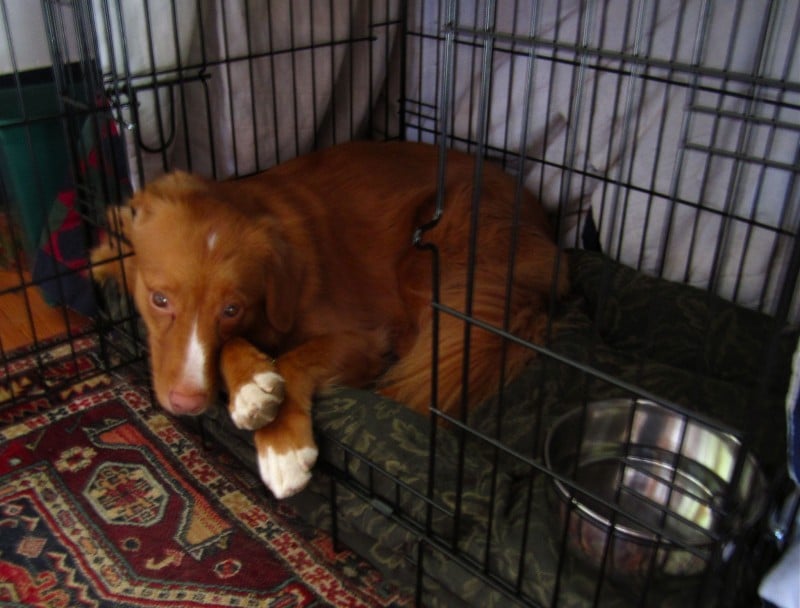One subject that will have trainers debating until the middle of the next century is crate training. There are those who swear by it and those who call it cruel and say that caging your dog is cruel. A lot of advice on crate training is available on the internet. Unfortunately, not all of it is good advice.
Why Crate Train Your Dog?
Crates are ideal to put your dog in when you go out so you can ensure that he doesn’t eat anything he shouldn’t when you are not around. It’s also ideal for your dog to have his own little den where he can go to get some time out.
A lot of people will give up crate training because their dog doesn’t like it and will bark and howl when left in the crate. Their problem is that they have not crate-trained their dog properly.
Crate Training — The How-To
The worst thing you can do while crate training is to use it as a punishment. So many times I’ve heard people say that their dog did something wrong and as a punishment, they put their dog in the crate. This is a big no-no. By doing that, you are associating the crate with a negative experience and your dog won’t like it. Your dog has to see the crate as his own little space and he’s not going to go into space where he’s been afraid.
When you first bring the crate in, make it as appealing to the dog as possible. Put blankets inside along with the dog’s favorite toys. It also helps if you feed your dog and leave some water in the crate with him. He has to associate it with positivity and treat it like this own little space.

Do not lock your dog in the crate for the first time and leave him for several hours. You have to gradually build up the time he’s left in the crate. Start off with five minutes and leave the room, when you come back in, give your dog a lot of attention and a treat. You want to make him think that staying in the crate is a good thing and he’s been a good boy.
[adwithin]
It’s best to gradually increase the time you leave your dog his crate for. Leaving the TV or radio on is also a good idea. The dog may be more soothed if he hears a sound he’s used to rather than complete silence.
If you have children, it’s important that you teach them not to disturb your dog if he’s sleeping in his crate and if he’s playing in his crate.
When leaving your dog inside his crate, leave a Kong with treats inside so he has something to keep him occupied. We’ve written a full review of the ten best training treats for dogs.
Important Points
If you are going out and leaving your dog in the crate, make sure you take your dog’s collar off. I have heard horror stories of dogs getting their collar caught in the crate and strangling themselves. It is one of the most important things you have to remember about your crate.
Having your dog comfortable in a crate is not an excuse for you to leave your dog for hours. Your dog needs to relieve himself and regular exercise. The crate must not be used as a babysitter. A reason that you can leave your dog for hours in the knowledge that he won’t chew anything in your house.

Always check the crate to make sure that no parts of the crate are broken or any of the prongs are snapped off and have a sharp edge. Maintaining the condition of your dog’s crate is important.
To Conclude
Crate training isn’t caging your dog and you are not going to be branded an unfit dog owner. As long as you train your dog properly and ensure that the crate is used as his own little space where he can escape if need be, your crate will be a lifesaver.
Your crate can be a lifesaver on bonfire night as your dog will have a den to hide in and escape the scare of explosions and fireworks.
Crate training is just another aspect of positive training for your dog. Your dog will be happier and your mind will be at ease when you have to leave him for a couple of hours.
Image credits to Wikimedia (Verena Stenke Pagnes for VestAndPage).

